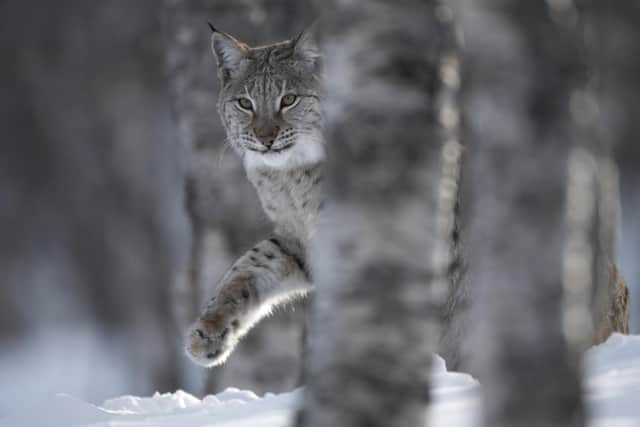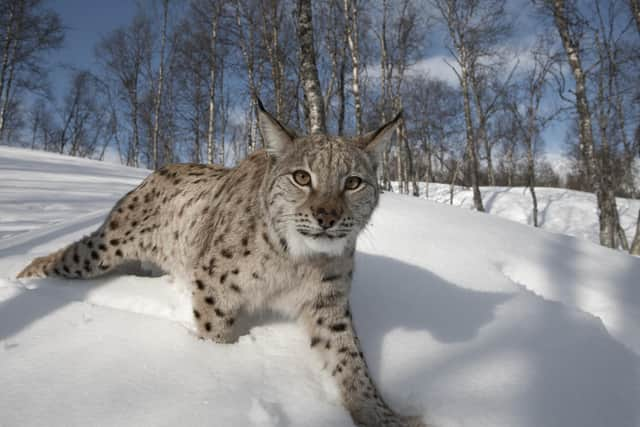Public support is key for future return of wild lynx to Scotland
Surveys of a wide range of Scots, including farmers, rural communities and tourism businesses, suggest the predators – which were wiped out in the UK around 1,300 years ago – could be reintroduced at some time in the future.
Previous research suggests there is enough suitable habitat and prey – mainly roe deer – for around 400 of the big cats to thrive in the Highlands.
Advertisement
Hide AdAdvertisement
Hide AdBut the charities behind the study say a successful return for the species would hang primarily on widespread support for the plans.
Commissioned by the Lynx to Scotland project, the research included a year-long consultation with a wide range of national stakeholders and local communities in the Cairngorms National Park and Argyll.
It was organised by charities Scotland: The Big Picture, Trees for Life and Vincent Wildlife Trust.
“When it comes to the return of the lynx, we’re in the realm of not yet – but not never,” said Peter Cairns, executive director of Scotland: The Big Picture.


“Positively, this new research shows there is sufficient appetite amongst different stakeholders to develop a more comprehensive understanding of this little-known species and the potential for its return to Scotland.
“The overall willingness across different sectors to engage in constructive and thoughtful discussions is heartening and very welcome.”
Analysis shows views about lynx reintroduction are far more diverse and complex than a simple ‘for’ and ‘against’, according to the project team.
Different perspectives were identified, with some supporting reintroduction because of the environmental and economic benefits, some against and others who do not think lynx should be reintroduced now, but are open to discussing the future potential.


Advertisement
Hide AdAdvertisement
Hide AdSteve Micklewright, chief executive of Trees for Life, said: “In weighing up the hows and whys of a trial lynx reintroduction, it’s important to consider different stakeholder interests and legitimate concerns.
“Properly assessing and listening to all views is key for the proposed return of an animal that has been absent from Scotland for a long time.”
Lynx are solitary woodland hunters that generally avoid humans.
The species is expanding in range and numbers across Europe, with successful reintroductions in various countries – many more densely populated than Scotland.
Conservationists say the presence of the animals, which are at the top of the food chain, bring ecological and environmental benefits, even in areas of farming, hunting, forestry and tourism.
The consultation assessed views around issues such as suitable habitat and the quality of Scotland’s woodlands, the potential for lynx to act as a cost-effective way to reduce the grazing impacts of woodland deer and predation implications for sheep and threatened species such as capercaillie and wildcats.
Other issues discussed included lynx behaviour in Europe and ways of managing reintroduced cats.
The study found the overriding concern, including from a majority of farmers, was around loss of sheep, with a consensus that mitigation measures would need to be a top priority.
Advertisement
Hide AdAdvertisement
Hide Ad“Overall, rather than sparking controversy, discussions around lynx reintroduction saw open debates which were passionate, robust and respectful, and contributed different views, knowledge and experiences,” said Jenny MacPherson, science and research programme manager at Vincent Wildlife Trust.
Comments
Want to join the conversation? Please or to comment on this article.
